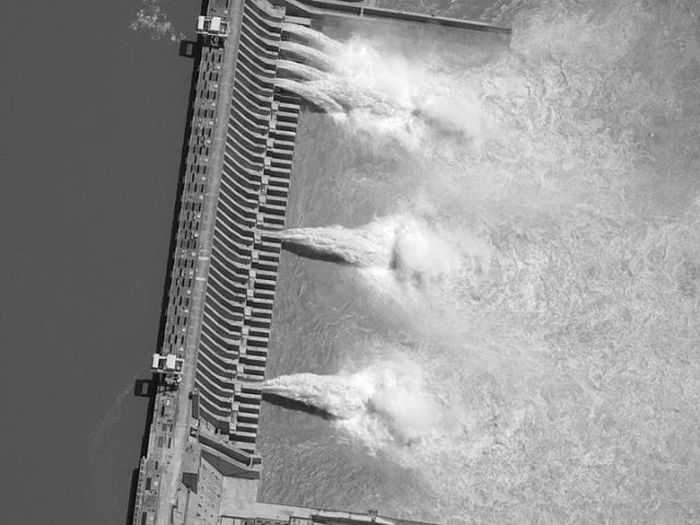|
|
Earth From Space
|
To perform an orbit, a spacecraft must travel faster than a sub-orbital spaceflight. A spacecraft has not entered orbit until it is traveling with a sufficiently great horizontal velocity such that the acceleration due to gravity on the spacecraft is less than or equal to the centripetal acceleration being caused by its horizontal velocity (circular motion). So to enter orbit, a spacecraft must not only reach space, but must also achieve a sufficient orbital speed (angular velocity). For a low-Earth orbit, this is about 7,900 m/s (28,400 km/h; 17,700 mph); by contrast, the fastest airplane speed ever achieved (excluding speeds achieved by deorbiting spacecraft) was 2,200 m/s (7,900 km/h; 4,900 mph) in 1967 by the North American X-15.
Konstantin Tsiolkovsky was the first person to realize that, given the energy available from any available chemical fuel, a several-stage rocket would be required. The escape velocity to pull free of Earth's gravitational field altogether and move into interplanetary space is about 11,000 m/s (39,600 km/h; 24,600 mph) The energy required to reach velocity for low Earth orbit (32 MJ/kg) is about twenty times the energy required simply to climb to the corresponding altitude (10 kJ/(km·kg)).
There is a major difference between sub-orbital and orbital spaceflights. The minimum altitude for a stable orbit around Earth (that is, one without significant atmospheric drag) begins at around 350 kilometres (220 mi) above mean sea level. A common misunderstanding about the boundary to space is that orbit occurs simply by reaching this altitude. Achieving orbital speed can theoretically occur at any altitude, although atmospheric drag precludes an orbit that is too low. At sufficient speed, an airplane would need a way to keep it from flying off into space, but at present, this speed is several times greater than anything within reasonable technology.
A common misconception is that people in orbit are outside Earth's gravity because they are "floating". They are floating because they are in "free fall": they are accelerating toward Earth, along with their spacecraft, but are simultaneously moving sideways fast enough that the "fall" away from a straight-line path merely keeps them in orbit at a constant distance above Earth's surface. Earth's gravity reaches out far past the Van Allen belt and keeps the Moon in orbit at an average distance of 384,403 kilometres (238,857 mi).
|
|









